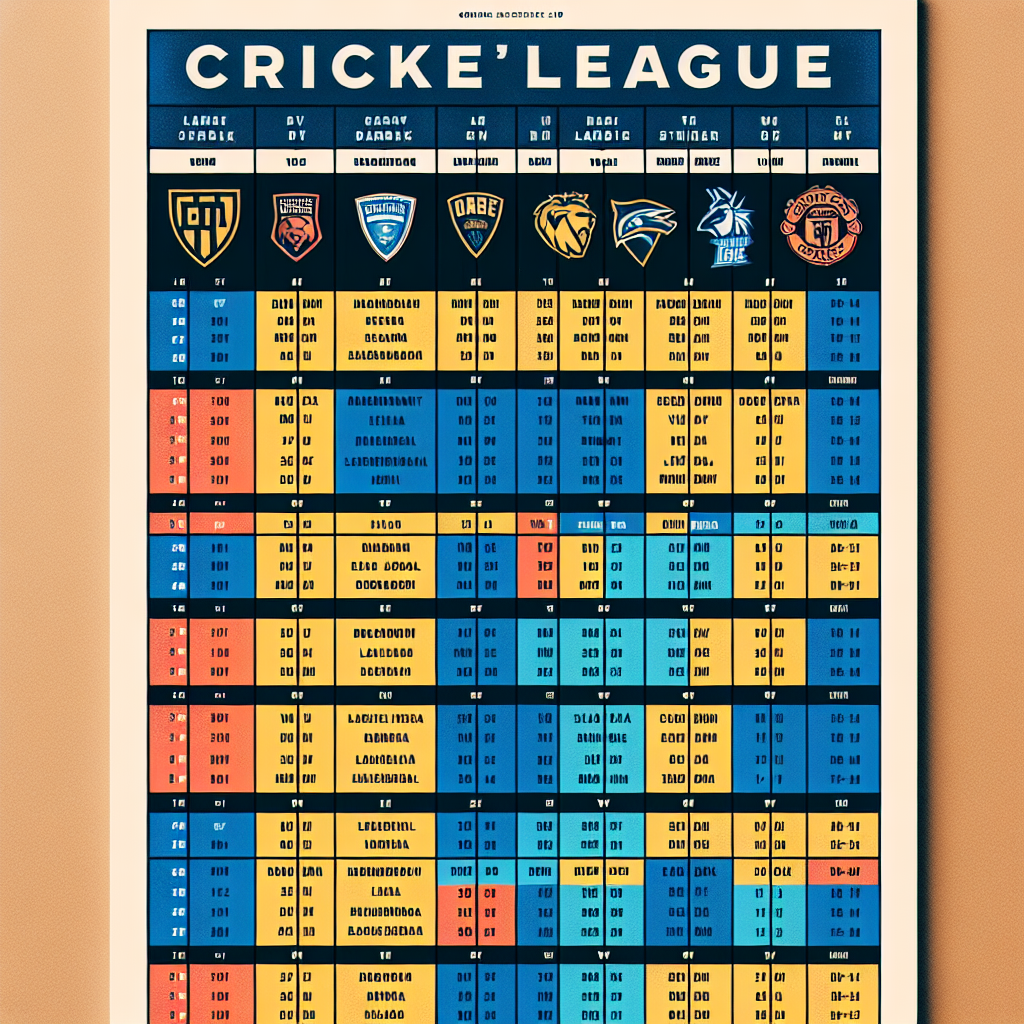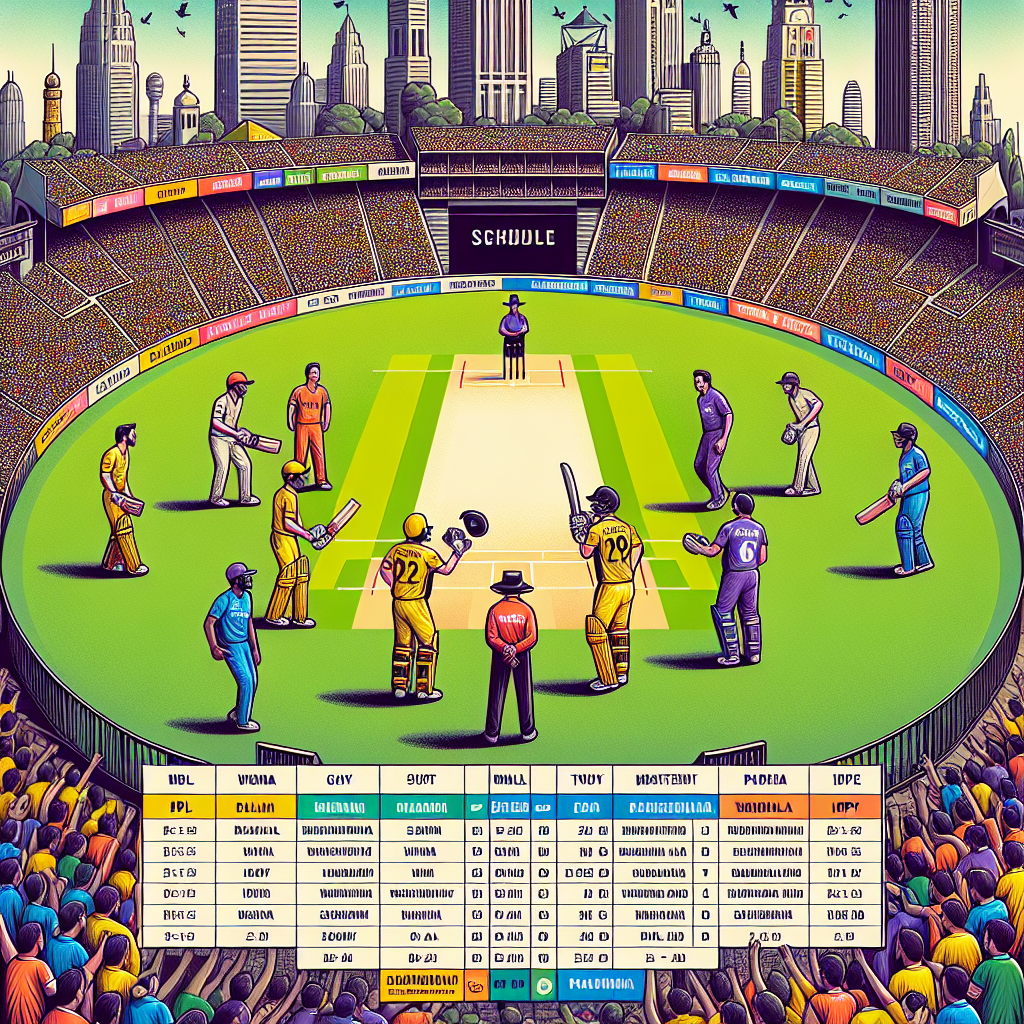Understanding the IPL Time Table: A Comprehensive Guide

The Indian Premier League (IPL) is one of the most celebrated cricket tournaments globally, attracting millions of fans each year. The tournament’s schedule, or time table, plays a crucial role in its success, impacting everything from team strategies to fan engagement. This article delves into the intricacies of the IPL time table, exploring its significance, structure, and the factors influencing its creation.
The Importance of the IPL Time Table
The IPL time table is more than just a list of matches; it is a strategic blueprint that dictates the flow of the tournament. It affects various stakeholders, including teams, players, broadcasters, and fans. Understanding its importance can provide insights into the tournament’s dynamics.
- Team Strategy: The schedule influences team strategies, as it determines rest days, travel plans, and match timings. Teams must adapt their training and recovery sessions based on the time table.
- Player Performance: A well-structured schedule can help maintain player fitness and performance levels, reducing the risk of injuries.
- Fan Engagement: The timing and location of matches are crucial for maximizing fan attendance and viewership, both in stadiums and on television.
- Broadcasting Rights: The time table affects broadcasting schedules, impacting advertising revenues and viewership ratings.
Structure of the IPL Time Table
The IPL time table is meticulously crafted to ensure a balanced and exciting tournament. It typically spans over two months, featuring a series of league matches followed by playoffs and the final. Here’s a breakdown of its structure:
League Stage
The league stage is the longest phase of the IPL, where each team plays a set number of matches against other teams. The schedule is designed to ensure fairness and competitiveness.
- Home and Away Matches: Teams play matches at their home grounds and away venues, promoting regional fan engagement.
- Doubleheaders: To accommodate all matches within the limited timeframe, doubleheaders (two matches in a day) are scheduled, usually on weekends.
- Rest Days: Strategic rest days are incorporated to allow teams to recover and travel between venues.
Playoffs
The playoffs consist of the top four teams from the league stage competing in a knockout format. The schedule for playoffs is designed to maintain suspense and excitement.
- Qualifier 1: The top two teams face off, with the winner advancing directly to the final.
- Eliminator: The third and fourth-placed teams compete, with the loser being eliminated.
- Qualifier 2: The loser of Qualifier 1 and the winner of the Eliminator play for a spot in the final.
The Final
The final match is the culmination of the IPL season, determining the champion. It is scheduled to maximize viewership and fanfare, often held at a neutral venue to ensure fairness.
Factors Influencing the IPL Time Table
Several factors influence the creation of the IPL time table, making it a complex and dynamic process. These factors ensure that the tournament runs smoothly while maximizing its commercial and entertainment value.
Venue Availability
The availability of stadiums is a critical factor, as venues are often shared with other sports and events. Scheduling must accommodate these constraints while ensuring a fair distribution of home and away matches.
Weather Conditions
Weather plays a significant role in scheduling, especially in regions prone to rain. Matches are often scheduled in the evening to avoid the heat and potential rain disruptions.
Broadcasting Considerations
Broadcasting rights are a major revenue source for the IPL. The schedule is crafted to maximize prime-time viewership, often aligning with the preferences of broadcasters and advertisers.
Travel Logistics
Efficient travel logistics are essential to minimize player fatigue and ensure timely arrivals at venues. The schedule is designed to optimize travel routes and reduce unnecessary travel.
Case Studies: Notable IPL Time Table Adjustments
Over the years, the IPL time table has seen several adjustments due to unforeseen circumstances. These case studies highlight the flexibility and adaptability required in scheduling.
COVID-19 Pandemic
The COVID-19 pandemic posed unprecedented challenges to the IPL schedule. In 2020, the tournament was postponed and eventually held in the UAE with a revised schedule to ensure player safety and compliance with health protocols.
General Elections
In years when general elections coincide with the IPL, the schedule is adjusted to accommodate security requirements and ensure smooth conduct of both events. This often involves shifting matches to neutral venues.
Statistics: Impact of the IPL Time Table
Statistics provide valuable insights into the impact of the IPL time table on various aspects of the tournament. Here are some key statistics:
- Viewership Ratings: Matches scheduled during prime-time slots consistently achieve higher viewership ratings, contributing to increased advertising revenues.
- Player Performance: Teams with balanced schedules, allowing adequate rest and recovery, tend to perform better in the latter stages of the tournament.
- Fan Attendance: Weekend matches and those held at popular venues often see higher fan attendance, enhancing the overall atmosphere of the tournament.
Conclusion: The Art and Science of IPL Scheduling
The IPL time table is a testament to the art and science of sports scheduling. It balances numerous factors to create a thrilling and competitive tournament that captivates fans worldwide. Understanding its intricacies provides a deeper appreciation for the effort and strategy involved in organizing one of the world’s most popular cricket leagues. As the IPL continues to evolve, so too will its scheduling, adapting to new challenges and opportunities in the ever-changing landscape of sports entertainment.
